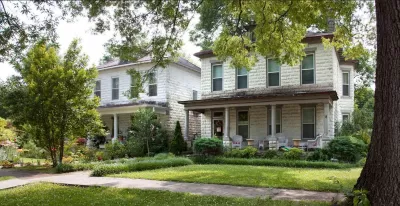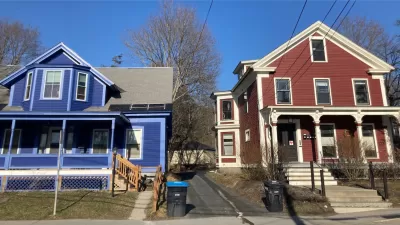Sets of pre-approved housing plans can lower construction costs, shorten timelines, and encourage more badly needed housing production.

As more cities turn to pre-approved ‘housing catalogs’ to streamline permitting processes and stimulate more housing production, Molly Bolan describes the not-so-new concept in Route Fifty. As Bolan explains, “In the early 20th century, Sears, Roebuck and Co. published catalogs with home designs. Customers could choose a plan and send away for the materials to build their ‘kit home.’”
In recent years, cities such as Los Angeles, Sacramento, and Stockton have developed their own catalogs of pre-approved plans for accessory dwelling units (ADUs) and other ‘missing middle housing’ types aimed at reducing costs for homeowners and making it easier to build new housing units.
The Sears Catalog homes inspired the city of South Bend, Indiana to create a “catalog of pre-approved plans for infill housing in an effort to incrementally increase housing stock in their neighborhoods without fundamentally changing the character of those communities,” says Tim Corcoran, the city’s community investment planning director. According to Corcoran, “The plans are geared to smaller lots that are common in cities, rather than the larger plots that exist in the suburbs.” The city hopes the catalog will lower ‘soft construction costs’ and incentivize more housing construction.
FULL STORY: ‘Housing Catalogs’ Make a Comeback

Alabama: Trump Terminates Settlements for Black Communities Harmed By Raw Sewage
Trump deemed the landmark civil rights agreement “illegal DEI and environmental justice policy.”

Planetizen Federal Action Tracker
A weekly monitor of how Trump’s orders and actions are impacting planners and planning in America.

The 120 Year Old Tiny Home Villages That Sheltered San Francisco’s Earthquake Refugees
More than a century ago, San Francisco mobilized to house thousands of residents displaced by the 1906 earthquake. Could their strategy offer a model for the present?

In Both Crashes and Crime, Public Transportation is Far Safer than Driving
Contrary to popular assumptions, public transportation has far lower crash and crime rates than automobile travel. For safer communities, improve and encourage transit travel.

Report: Zoning Reforms Should Complement Nashville’s Ambitious Transit Plan
Without reform, restrictive zoning codes will limit the impact of the city’s planned transit expansion and could exclude some of the residents who depend on transit the most.

Judge Orders Release of Frozen IRA, IIJA Funding
The decision is a victory for environmental groups who charged that freezing funds for critical infrastructure and disaster response programs caused “real and irreparable harm” to communities.
Urban Design for Planners 1: Software Tools
This six-course series explores essential urban design concepts using open source software and equips planners with the tools they need to participate fully in the urban design process.
Planning for Universal Design
Learn the tools for implementing Universal Design in planning regulations.
Clanton & Associates, Inc.
Jessamine County Fiscal Court
Institute for Housing and Urban Development Studies (IHS)
City of Grandview
Harvard GSD Executive Education
Toledo-Lucas County Plan Commissions
Salt Lake City
NYU Wagner Graduate School of Public Service





























